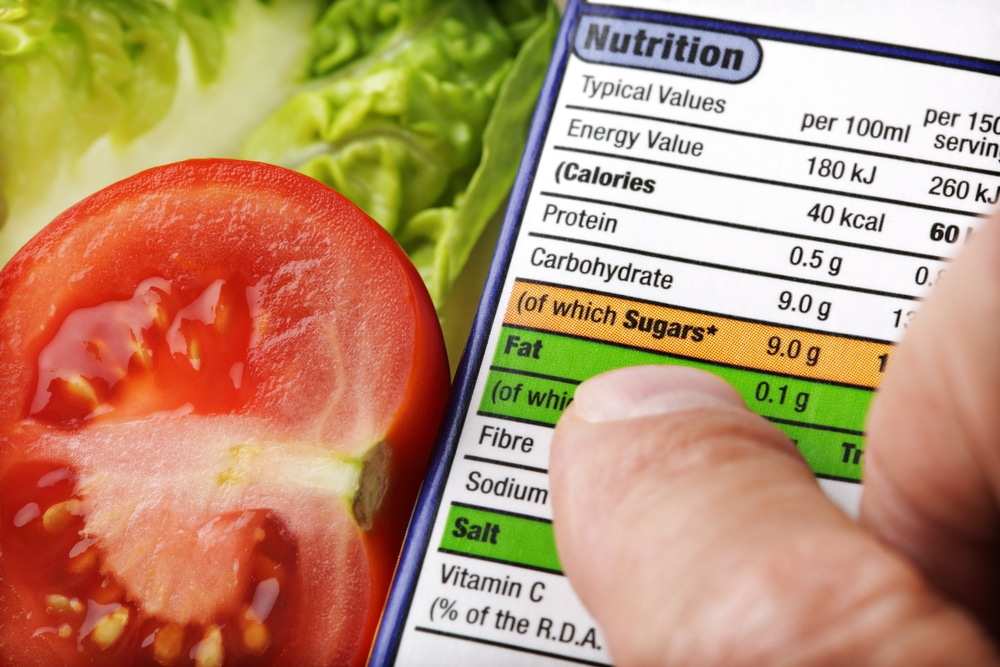Understanding the FDA’s Proposed Rule on Food Labeling
Food manufacturers must navigate the complex landscape of FDA food labeling requirements. The FDA’s proposed rule on food labeling, including the Front-of-Package (FOP) Nutrition Labeling Rule, represents a significant step toward enhancing consumer transparency.
This blog breaks down the key elements of the proposed rule, what it means for food manufacturers, and how expert legal guidance can ensure compliance.
Overview of the New FDA Food Labeling Rule
The FDA’s proposed rule on food labeling, as outlined in the Federal Register, focuses on introducing a mandatory FOP nutrition labeling system. This rule aims to simplify the presentation of critical nutrition information, enabling consumers to make informed dietary choices at a glance.
What Is the Front-of-Package Nutrition Labeling Rule?
The Front-of-Package (FOP) Nutrition Labeling Rule is designed to provide clear, concise nutrition details on the front of food packages. Unlike the traditional Nutrition Facts panel found on the back or side of packages, the FOP label highlights essential information such as:
- Calories per serving
- Added sugars
- Saturated fats
- Sodium levels
This standardized format ensures consumers can quickly assess the healthfulness of products without deciphering complex labels.
Key Objectives of the Proposed Rule
The primary goals of the FOP nutrition labeling rule include:
- Promoting public health: By emphasizing key nutrients, the rule helps consumers make healthier choices, potentially reducing diet-related illnesses.
- Encouraging transparency: A standardized format discourages misleading claims and ensures consistency across products.
- Supporting informed decisions: The new labels simplify comparisons between products, making it easier to identify healthier options.
Comparison to Current Food Labeling Requirements
Currently, the FDA food labeling guide mandates the inclusion of a detailed Nutrition Facts panel on food products. While effective, this panel often requires close examination to interpret. The FOP labeling rule supplements the existing system by offering a snapshot of critical nutrition data. This proposed shift represents a major update in FDA food label changes, aligning with similar initiatives in other countries.
Compliance Requirements for Food Manufacturers
Understanding the compliance requirements of the new rule is crucial for food producers aiming to avoid penalties and maintain market access.
What the Proposed Rule Means for Food Producers
Food manufacturers will need to:
- Redesign product labels: Incorporate the required FOP nutrition information in the specified format.
- Conduct nutrition analyses: Ensure accurate representation of calorie counts and nutrient levels.
Adhere to size and placement guidelines: The FDA labeling guidance specifies the exact location and dimensions of the FOP label.

Timelines and Deadlines for Compliance
While the FDA has not finalized the implementation timeline, food manufacturers can expect a phased approach to compliance. Historically, the FDA provides:
- Initial grace periods: For larger companies, this may range from 18 months to two years.
- Extended deadlines for smaller businesses: Allowing additional time to update labeling processes and resources.
Monitoring updates on the FDA’s website is vital to stay informed about specific deadlines.
Penalties for Non-Compliance with FDA Labeling Rules
Failure to meet food labeling compliance standards can result in severe consequences, including:
- Product recalls: Non-compliant products may be removed from the market.
- Fines and legal action: Financial penalties and potential lawsuits can damage a company’s reputation.
- Loss of consumer trust: Non-compliance may signal to customers that a brand is unreliable or untrustworthy.
Legal Guidance for Navigating Food Labeling Regulations
Given the complexities of FDA food labeling requirements, working with an experienced FDA lawyer can significantly ease the compliance process.
How an FDA Lawyer Can Help Ensure Compliance
An FDA attorney specializes in:
- Interpreting FDA labeling guidance: Ensuring your labels meet both the technical and aesthetic requirements of the proposed rule.
- Providing tailored advice: Addressing the unique challenges faced by your company’s products and market segment.
- Facilitating FDA interactions: Handling correspondence and resolving disputes with regulatory authorities.
Addressing Challenges with Label Design and Claims
Food producers often encounter challenges with:
- Label formatting: Ensuring the FOP label adheres to size, placement, and font specifications.
- Nutrient claims: Avoiding exaggerated or misleading statements that could attract FDA scrutiny.
Legal guidance can help resolve these issues by:
- Conducting pre-market reviews of labels
- Advising on permissible health claims
- Ensuring compliance with both U.S. and international standards
Preparing for Future FDA Food Labeling Changes
The FOP nutrition labeling rule reflects the FDA’s ongoing commitment to improving food transparency. By partnering with a knowledgeable attorney, food manufacturers can:
- Anticipate regulatory shifts: Stay ahead of upcoming changes to avoid last-minute adjustments.
- Implement proactive strategies: Develop scalable solutions that accommodate future updates.
- Minimize risks: Reduce the likelihood of costly compliance failures.
Let FDA Atty Guide You
The FDA’s proposed rule on FOP nutrition labeling represents a pivotal shift in food labeling compliance. For food producers, adhering to these changes involves more than just updating packaging—it requires navigating intricate regulations to avoid penalties and maintain consumer trust. By partnering with an experienced FDA lawyer like Marc Sanchez, manufacturers can ensure their labels meet all requirements while preparing for future regulatory changes.
Contact us today for expert assistance with FDA food labeling compliance to safeguard your business and align with the latest FDA food label changes.
Are you in trouble with the FDA?
Don’t panic — you’ve got backup. Download 5 Tips to Help You Navigate FDA Enforcement and learn how to resolve the situation right now.